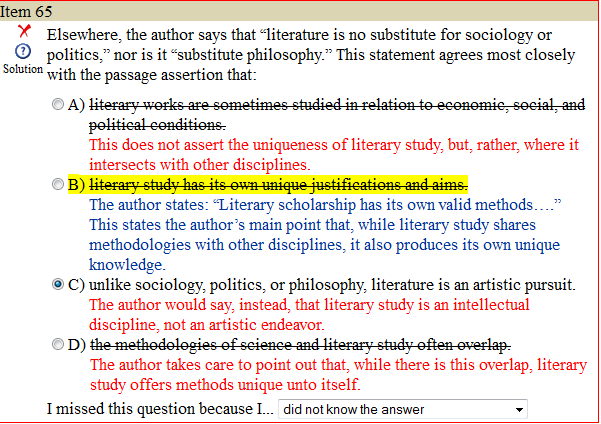Ouch, this PS hit me on all my weak topics.
2 quick PS questions.
____________________________
PS. #10.
What topic exactly is this questing testing? I was assuming it was asking about unpaired/paired electrons, but the answer given talks about including protons and neutrons.
For a given magnitude of B1, the nucleus with the nonzero precession frequency will be which of the following?
A)
4 He
2
B)
16 O
8
C)
19 F
9
Because protons and neutrons have spin just as electrons do, to guarantee a nonzero net spin, an odd number of nucleons is needed. Of the foils, the only element that has an odd number of nucleons is . Thus, C is the best answer.
D)
208 Pb
82
_______________________________________________
PS, # 49
For this problem there was an accompanying diagram. I was able to reason/guess that q > α given the different values of n; but NO WHERE in the diagram were the variable q ¢ or q. I was/am hoping that my computer didn't display them. Since I had no idea what q ¢ I could only guess between the two.
Was q ¢ suppose to be displayed? If not, how was I suppose to know what the variable was standing for.
A beam of light shines into a transparent medium with parallel surfaces. Part of the beam is reflected back into the air as diagrammed above. (The figure is NOT to scale.) The index of refraction of the medium is 1.5. Which of the following is true?
A)
q < q ¢ and q < α
B)
q = q ¢ and q > α
Because the medium's surfaces are parallel, a perpendicular line drawn to the lower surface of the medium will be parallel to both of the perpendiculars shown in the figure. This means that the angle of incidence at the lower surface will also be a, as will the angle of reflection at the lower surface, and the beam reflecting from the lower surface of the medium will then be a mirror image of the incoming beam, so q¢ = q. Further, because air's index of refraction is about 1.0, Snell's law would show that q > a. Thus, B is the best answer.
C)
q = q ¢ and q < α
D)
q > q ¢ and q > α


 How's that possible!
How's that possible!